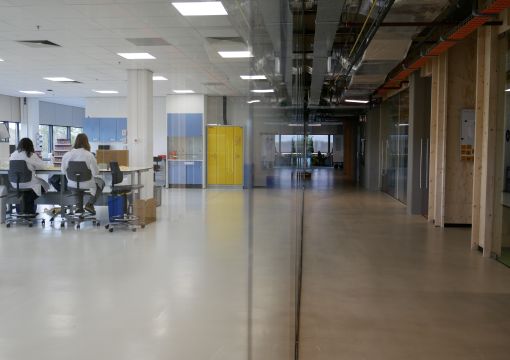Additional collection
Lifelines is an open protocol cohort study. So, in addition to the regular Lifelines study standard protocol (i.e., 30 years longitudinal), the open protocol offers researchers the opportunity to collect additional data and/or biological samples within the existing infrastructure. To this end, researchers can submit an application for an additional study, such as a questionnaire and/or additional biological sample collection.
The aim of Lifelines is that additional data and samples eventually become available for researchers worldwide. Our ‘return-of-results’ rule states that researchers collecting additional data or material from Lifelines participants, or generating new data from Lifelines samples, need to return these research results, including the raw data, to Lifelines for inclusion in the biobank so that they are available for other researchers to use.
Below you can find a few of the very successful additional studies that have been or are being conducted within the Lifelines cohort. If you would like to know more about the studies below, or about the possibilities to conduct an additional study, please contact us.

Lifelines DEEP
Omics profiling in 1500 persons (2013)
The aim of Lifelines DEEP is to allow for in-depth analysis of gastrointestinal (GI) health-related problems. The depth of phenotyping in the Lifelines DEEP cohort is unique and offers opportunities for groundbreaking research. The cohort comprises nearly 1500 Lifelines participants for whom we, besides the data and biological samples already collected in the regular Lifelines research program, now also have deep molecular phenotypes based on “omics” profiling, including: (1) whole-genome genotype data, (2) whole-genome methylation 450k data, (3) whole-genome gene expression data, (4) metabolomics data from plasma and exhaled breath, and (5) gut microbiome data. Lifelines DEEP has already resulted in more than 10 high-profile publications including several high-impact papers with wide-reaching results. In the April 2016 Science paper (#ref.), for example, deep sequencing of the gut microbiome showed relationships between variations in the microbiome and 126 exogenous and intrinsic host factors. These results are an important step towards a better understanding of environment-diet-microbe-host interactions.

Lifelines DAG3
Omics profiling in 10,000 persons (2015)
The aim of DAG3 was to study the role of the microbiome in the occurrence of chronic diseases, based on Lifelines data in 10.000 participants. Using Lifelines DEEP data (#ref.) and biological samples (N = 1500), subsequently in DAG3, researchers scaled up the number of participants as well as the number of microbiome sample sites. In total, 10,000 Lifelines participants were included for collection of extra biological samples: PAXgene blood, microbiome samples from faeces, throat swabs, tongue swabs and nose swabs for sequencing and culturing. The “LifeLines DAG3” cohort is a truly unique cohort of extremely well phenotyped Dutch individuals that can help address many different scientific questions.

Lifelines NEXT
Early life development (2015 - in progress)
The aim of Lifelines NEXT is to study the effect of early life or pre-conception trans-generational events on healthy ageing and chronic disease in (early) childhood. In this observational study among Lifelines participants, 1500 mothers and their baby’s will be followed intensively. Immunological, metabolic, environmental, (epi)genomic and social factors will be integrated with microbiome data to study early life development. This study includes the collection of biological samples: blood, urine, stool, placenta, breast milk, vaginal smear, nasal epithelial smear and buccal smear. This is combined with data collection on environmental factors via questionnaires and linkage with other databases.

Measurement of cortisol in scalp hair
2017-in progress
The aim of this study is to create reference values for cortisol in scalp hair, obtained through a new measurement technique using LC-MS/MS. Furthermore, it is examined whether the associations between hair cortisol and waist circumference, BMI and metabolic parameters that were found using immunoassays can be confirmed using LC-MS/MS. Additionally, these results can be used to evaluate the protocol of hair collection in Lifelines in a pilot setting.

BIObanks Netherlands Internet Collaboration (BIONIC)
BBMRI-NL regenboogproject (2017 – in progress)
BIONIC aims to identify genetic loci related to depression and anxiety, two common and often co-morbid psychiatric disorders. An additional digital questionnaire is sent to all Lifelines participants older than 18 years old.

Shiftwork
2017 – 2018
The aim of Shiftwork is to study effects of irregular working hours (i.e., night shifts) on the biological clock. To do so, additional questionnaires were sent to approximately 80.000 Lifelines participants over 18 years old. Based on questionnaire results, different groups are selected and matched for sub sequential DNA-methylation analyses to study how irregular working hours relate to health outcome.

Blue-light study
2018
The aim of the blue light study is to study screen use that emit blue-light, such as during TV-watching and smartphone use, in children. To do so, an additional digital questionnaire was sent out to approximately 8.000 Lifelines participants under 18 years old, which provides new insight into blue-light screen use during day and night time and how this relates to health outcome.

